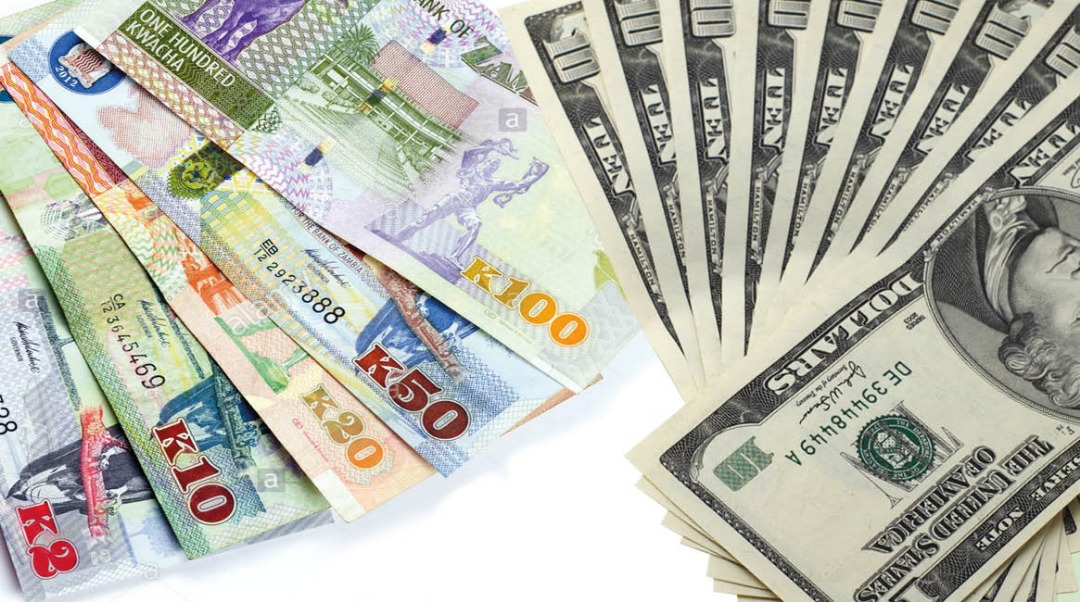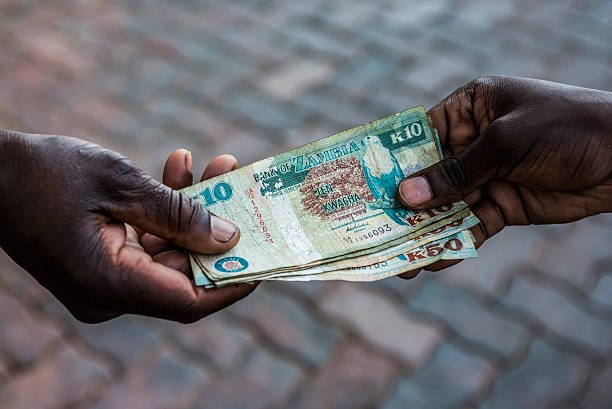• There has been consistency in terms of depreciation of the Kwacha in the past three months.
• This is due to the dwindling of the euphoria that was created by the IMF’s approval of the bailout package.
• The Kwacha started getting stable and strong after the IMF came on board.
The Zambian Kwacha has continued to be vulnerable to the US dollar.
The Kwacha last made a huge appreciation on 10th December, 2021 when trading between 15.90 and 16.21 against the US Dollar, on the bid and offer respectively.
On 31st December 2021, the Kwacha closed the year trading at K16.66 per US dollar, and the local unit is closing the year 2022 trading at K17.91 and K18.26 to the dollar.
In September 2022, the Zambian Kwacha was the world’s best performing currency against the US dollar, rallying over 18.5% against the dollar from January the same year.
A range of monetary and fiscal measures appeared to be behind the economy’s strength.
The Kwacha’s performance has been firmly supported by two strong pillars in the economy, and thus the continuous support by the central bank throughout the year and also on the other side, local Forex market has been sustained by project funding. So far, this year, the central bank has substantially pumped slightly above US$1.3 billion into the domestic Forex market.
The local unit started getting stable and stronger after the International Monetary Fund (IMF) came on board around August 2022, when it’s executive board approved a USD 1.3 billion facility in favor of Zambia to restore the country’s economic stability and drive development.
Following approval of the bailout package, the Kwacha traded as the strongest currency in the world because globally most currencies are under pressure.
But over time, the Kwacha is dwindling due to several factors among them the ongoing negotiations with Zambia’s creditors over the debt restructuring programme and high US dollar demand against limited supply.
The local currency once traded as high as K22 in 2021, and later went to a low of K15 against the greenback and its now sitting around K18.
And an Economist says despite disruptions and fears about the global recession as a result of the Russia-Ukraine war, Zambia’s economy and the local currency performed exceptionally in 2022.
Emmanuel Zulu told Money FM News that the lowest that the Kwacha has ever traded was around K15. 03 per dollar, and is currently better than the South African Rand.
Mr. Zulu noted that the IMF bailout package brought a lot of confidence in the economy because the Creditors were optimistic that Zambia is getting back to normalcy.
He however said there has been consistency in terms of depreciation of the Kwacha in the past three months, due to the dwindling of the euphoria that was created by the IMF’s approval of the bailout package.
“The Kwacha started getting stable and strong after the IMF came on board, and traded as the strongest currency in the world because globally most currencies are under pressure. The Russia Ukraine war and all these disruptions in the global economy, despite all those disruptions and fears about global recession, our economy and our currency performed exceptionally.”
“The lowest that I remember was around K15. 03 for a dollar and we are better than the South African Rand so that IMF bailout package brought a lot of confidence in that even the Creditors had confidence that Zambia is getting back to normalcy. A lot of dynamics have taken place. We are coming from a high of K22, we had gone to a low of K15 to a dollar and now are around K18. There has been consistence in terms of depreciation of the Kwacha in the past three months, and what explains this is the euphoria,” Mr. Zulu said.
Mr. Zulu said the Kwacha appreciated because of the confidence the country had gained because of investor confidence but there was no production that was backing its strong performance.
“You can only talk of a stronger currency when you talk of production, value addition and increasing exports value in relation to imports. But over time the Kwacha is dwindling because we are still in negotiations with our creditors over the debt restructuring programme,” he stated.
Mr. Zulu further attributed the depreciation of the Kwacha to the silence on the debt restricting process, failure by Zambia to pay the Eurobond that was due in September 2022, and high US dollar demand during the festive season.
“We haven’t heard that we have finalized, what type of relief Zambia has been given, nothing yet but of course efforts are being made and follow ups being made. Because of that silence, Zambia was due to pay a Eurobond in September but we didn’t pay, so you can see all those factors that are coming in.
“Then this period of course consumption is high, companies and chain stores tend to import a lot because they know that they will sale a lot this period because most of the products they can’t get them locally so there was high demand for the dollar.
According to other financial market players, the Kwacha appreciated by slightly over 3 percent in July 2022 from an average of K17.02 per US dollar to K16.45. This is primarily on the justification of the sustained intervention by Bank of Zambia to supply US Dollars on the market and the positive outturns of market sentiments surrounding national debt restructuring also triggered some positive vibes in the local economy.
“On average the Kwacha in this material year, has shown some appreciation levels that is standing at slightly about 10% and depreciated at 7.9% on year on year reflections, as compared to the last year’s overall performances which also stood at about 23% with the levels of depreciation and appreciated at marginally 15% respectively.”
“The local market has since witnessed reduced activities for some time now, while the demand for US Dollar continues to go steadily on high demands especially in this fourth quarter of 2022, and the other hand, the dollar supply has also kept on being extremely very limited on the local scene. The Kwacha’s overall loses is seriously compounding of majority of the year’s gains, as the year comes up to an end, hitting pretty lows which were last seen in the calendar month of February this year.
The Kwacha is expected to gain strength against major convertible currencies between January and February, 2023 as mining companies bring back the foreign exchange (FOREX) to start mining activities for the rain season.







